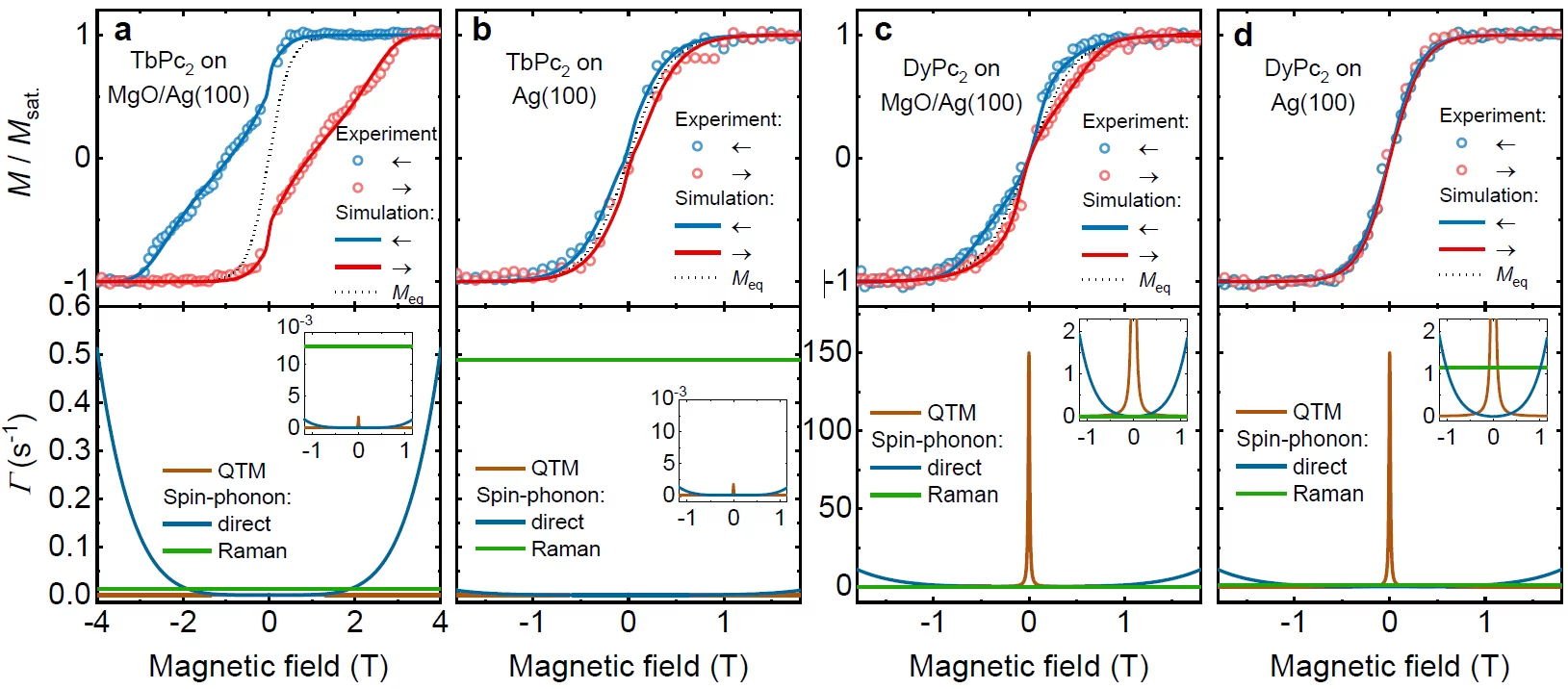The suppression of two-phonon Raman processes, which can be achieved by an intermediate, ultrathin magnesium oxide film, is important for the enormous enhancement of the magnetic relaxation times of surface adsorbed lanthanide phthalocyanine double decker single-molecule magnets. This has been demonstrated in a recent work by a research team at the X-Treme beam line of the Swiss Light Source. In order to understand the magnetic relaxation processes, the researchers have measured the magnetic hysteresis loops of DyPc2 single-molecule magnets adsorbed on the (100) surface of a silver single crystal with and without an intermediate, few-layer thick magnesium oxide film. They have further employed density functional theory calculations and a magnetization dynamics model which allows to reproduce the magnetic hysteresis loops of the present data on DyPc2 and the one previously acquired on TbPc2. The work highlights the importance of spin-phonon coupling for the magnetic relaxation of single-molecule magnets adsorbed on surfaces.
Contact
Dr. Jan Dreiser
Staff Scientist
PSI, Photon Science Division
Forschungsstrasse 111, 5232 Villigen PSI, Switzerland
Telephone: +41 56 310 5895
E-mail: jan.dreiser@psi.ch
Original Publication
Understanding the Superior Stability of Single-Molecule Magnets on an Oxide Film
Michał Studniarek, et al.
Advanced Science, in press (2019)
DOI: 10.1002/advs.201901736 (link is external)

